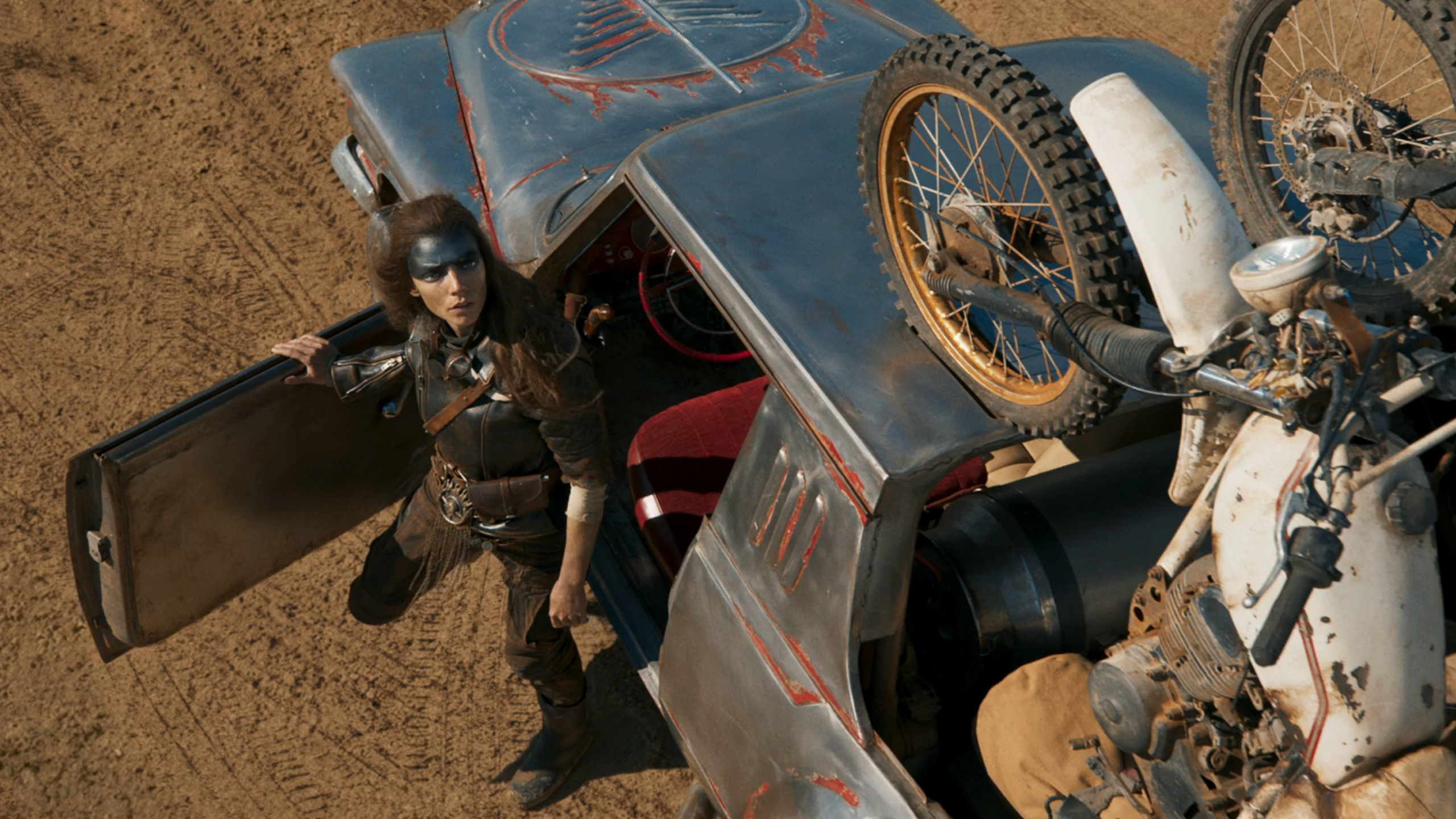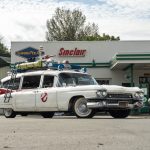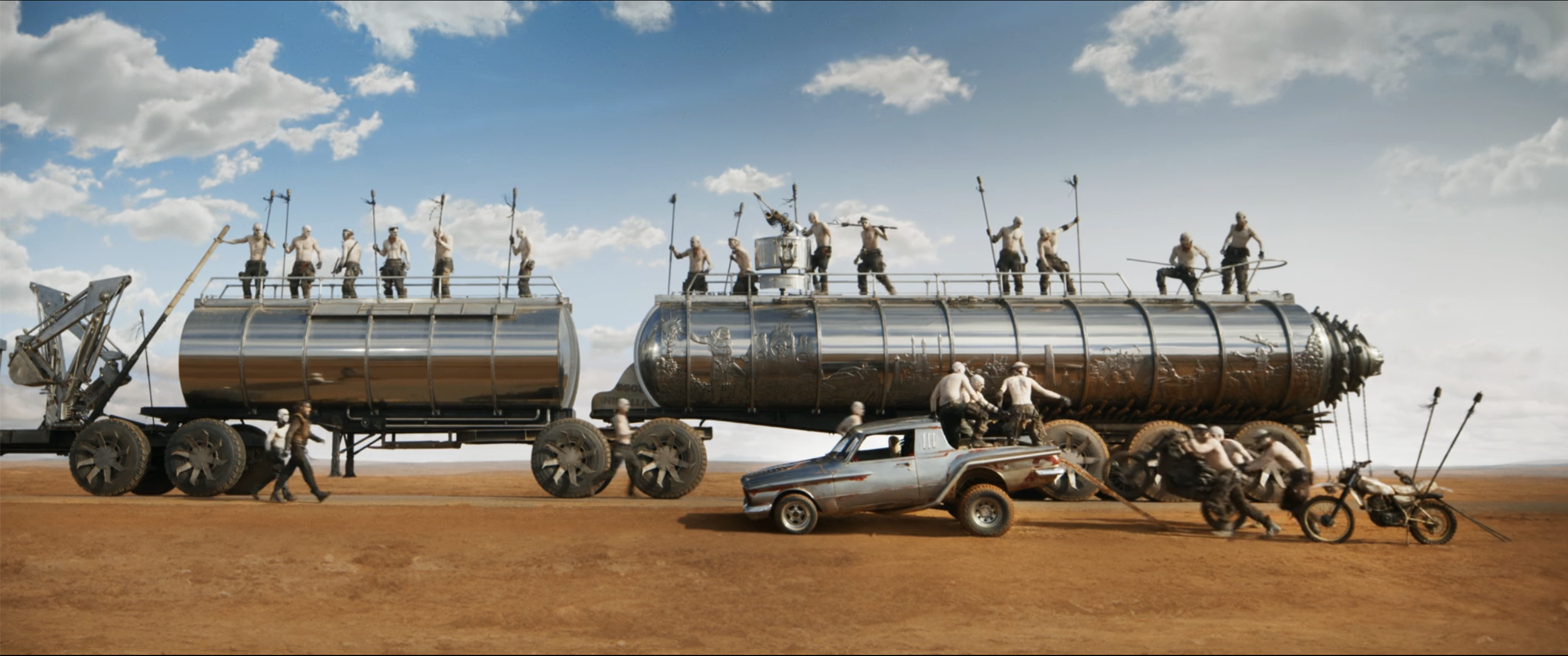The Wasteland is hell – but to gearheads, it looks a lot like heaven. Filmmaker George Miller calls Furiosa: A Mad Max Saga an “Odyssey on wheels,” and it’s easy to see why: A new road warrior named Furiosa has emerged from the Wasteland, one accompanied by a fleet of vehicles as menacing as they are gorgeous.
The events of 2015’s Mad Max: Fury Road unfold over just three days; as Furiosa, Charlize Theron gives an indelible, powerful performance, communicating everything we need to know about her character in just a few lines, looks, gestures. As that film’s prequel, Furiosa delves deeper still, revealing 15 years of the character’s life, starting with the moment she was snatched from the Green Place as a child and taken to the warlord Dementus (Chris Hemsworth) in an echo of the Greek myth of Persephone and Hades. (Because Furiosa takes place over so many years, two actors play her: Alyla Browne and Anya Taylor-Joy.) While Odysseus’ journeys back to Ithaca after the Trojan War lasts for ten years, Furiosa’s own quest to get back to the Green Place takes five years longer.

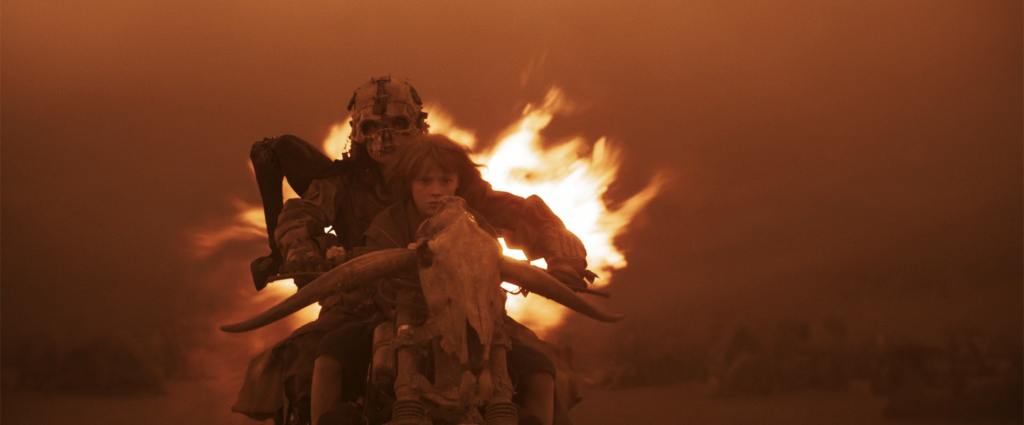
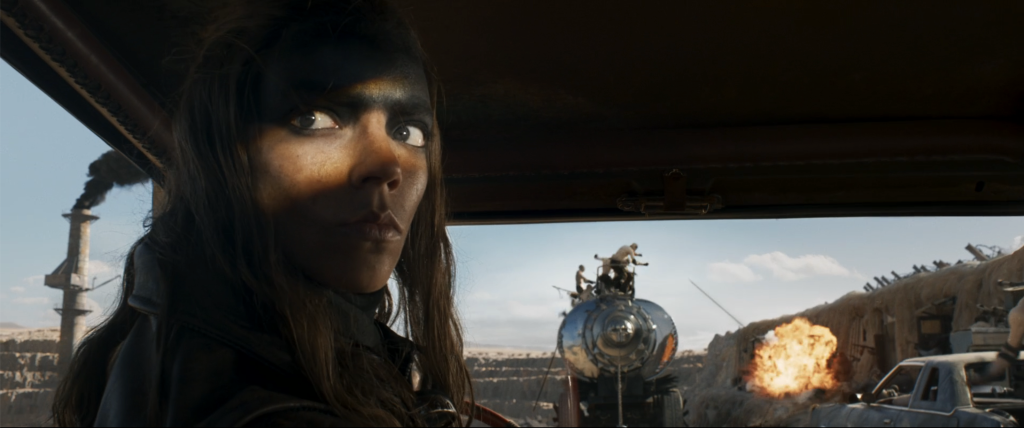
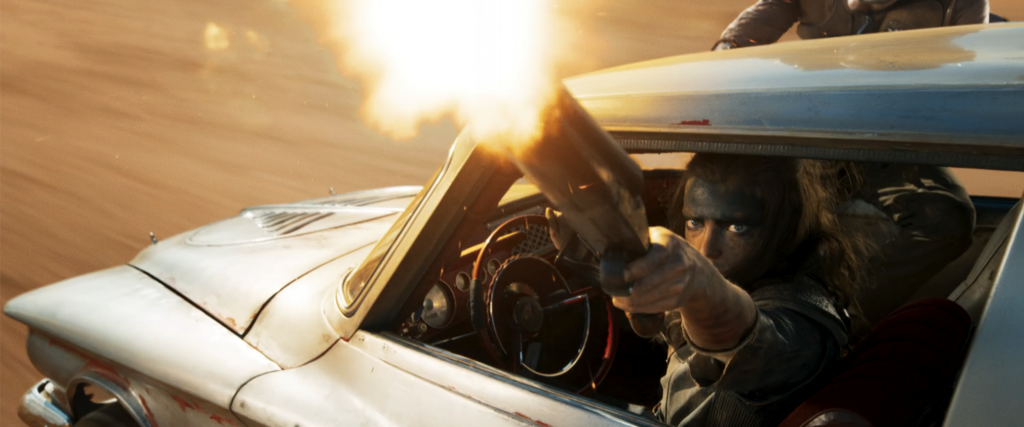
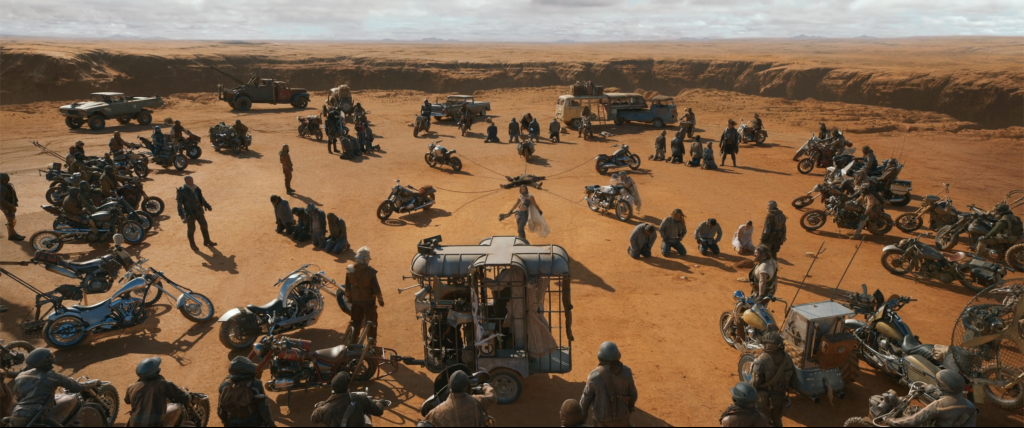
It is as enlightening to know George Miller’s backstory as it is to know Furiosa’s. That vehicles are so essential to the Mad Max universe makes even more sense if you’re aware of Miller’s history: Before he became a filmmaker, he was a medical doctor bearing witness to the devastation wrought by Australia’s savage car culture. Working in an emergency room in rural Queensland, he treated car-crash victims, a byproduct of his country’s lax driving laws in the ‘70s. Miller told Australian Screen: “There was just those long flat roads where there was no speed limit and people would just go.” He was disturbed by the violence, the carnage, the way that it was processed and accepted. The OPEC oil crisis of ’73 also left an impression on the filmmaker, as the first shot was fired after only 10 days of oil restrictions. Although there were no casualties and the gun was only fired into the air, Miller realised humankind could very believably “wage war for a tank of juice.”
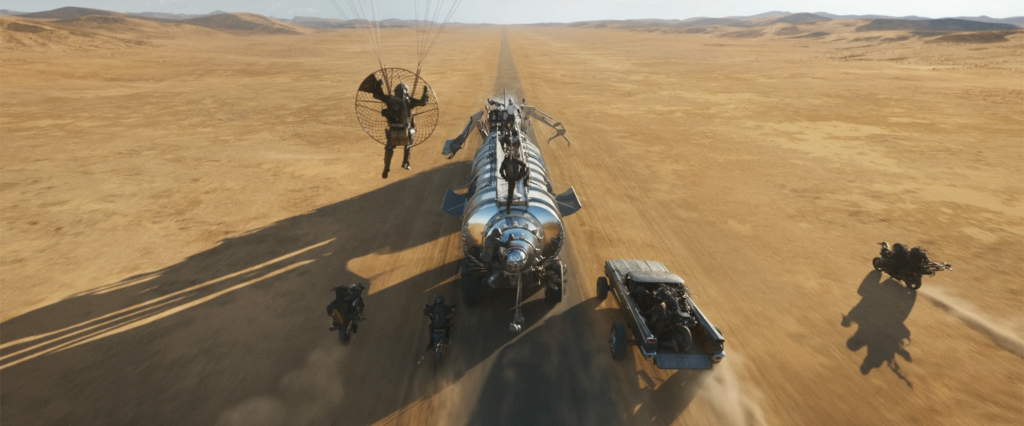
And so, in the post-apocalyptic future envisioned by Miller, a new religion revolving around cars has been born. “Guzzoline” is so highly valued that there’s an entire city called Gastown dedicated to its manufacture and trade. Essential to survival in the Wasteland, vehicles have understandably become objects of worship: War Boys salute the Immortan Joe and pray by making the shape of V8 pistons with their hands to a towering altar of steering wheels, scarify themselves with car parts, smear engine grease on their foreheads. Lachy Hulme’s villainous Rizzdale Pell even wears a sacred-heart badge made of car keys.
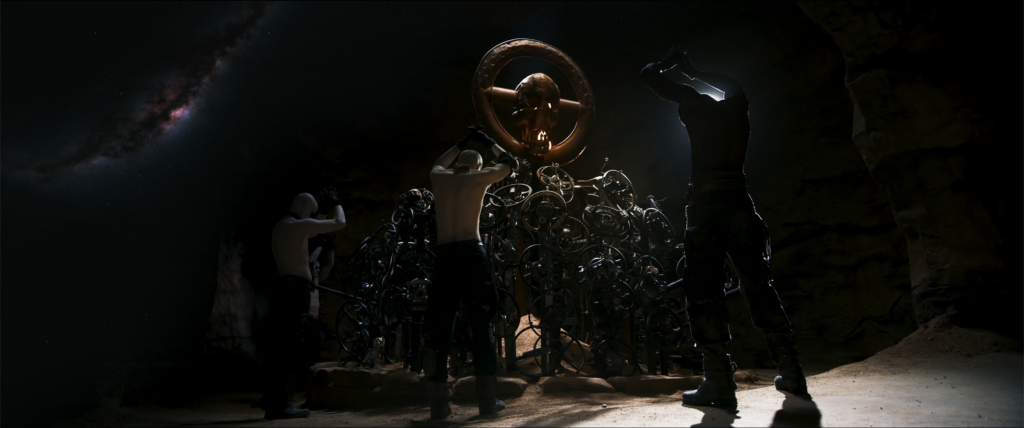
The War Rig is one of Mad Max’s most venerated vehicles, birthed out of a cavernous part of the Citadel called the House of Holy Motors. It was Fury Road’s centrepiece machine, a big rusted black beast charging through the mica-laced sands of the Wasteland. But Miller made a few changes in his newest entry in the saga. In Fury Road, the War Rig was left-hand drive; this time around, it’s a right-hand drive vehicle. Miller also decided that the War Rig should be shiny and chrome at its inception, with elaborate engravings on its side like cave paintings. As production designer Colin Gibson explained to The Ringer: “This vehicle, it’s the Sun King level, it’s Louis XIV, it’s the Palace of Versailles. So it became a beautiful, big, shiny monument to the apogee of our friend, the Immortan’s height of power when he meets Dementus. So his legend is basically being carried out along that strip of bitumen into the Wasteland to let everybody know who the f*** I am, how important I am, and what I did.” Miller thought of the newly birthed War Rig like a spaceship, with Tom Burke’s Praetorian Jack as an astronaut. But Furiosa helps build the War Rig, there from its genesis to the finished product – she is essential to its creation, just as it’s an inextricable part of her. When it’s finished, Clarence Ryan’s Black Thumb says to Furiosa, “She is a mighty thing. Bigger, stronger, faster, further.” But he could be describing the road warrior, too.
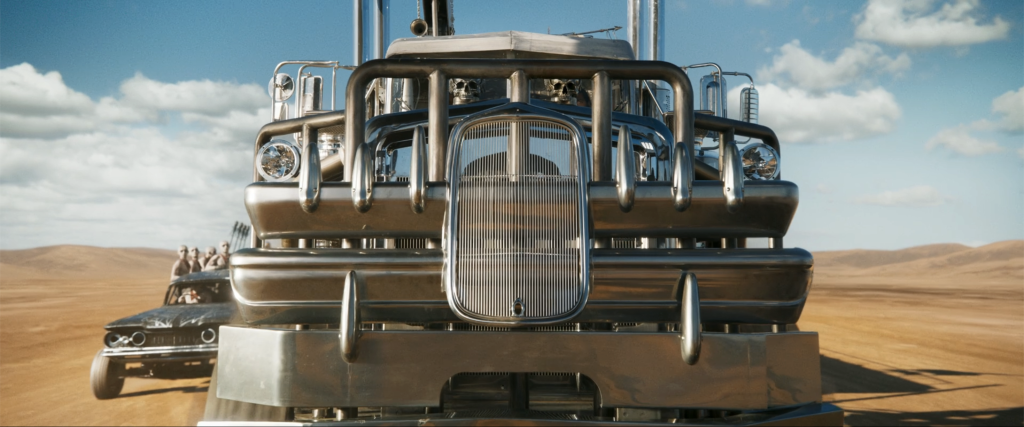
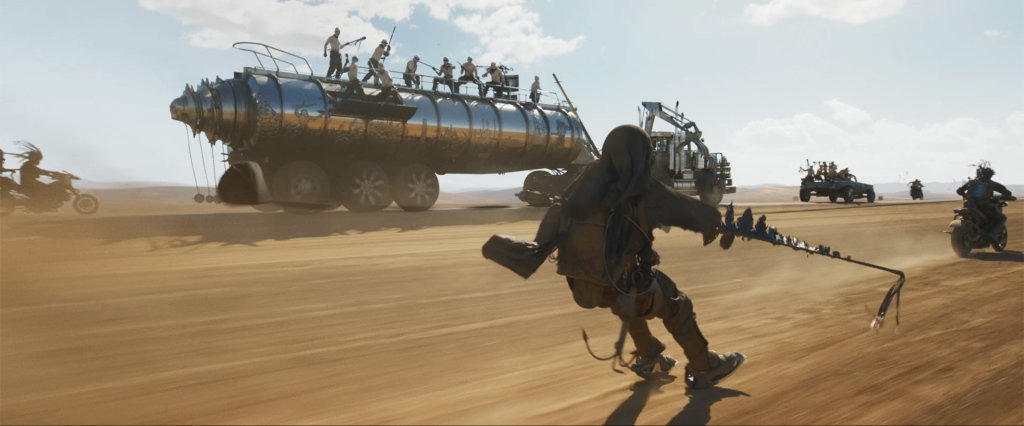
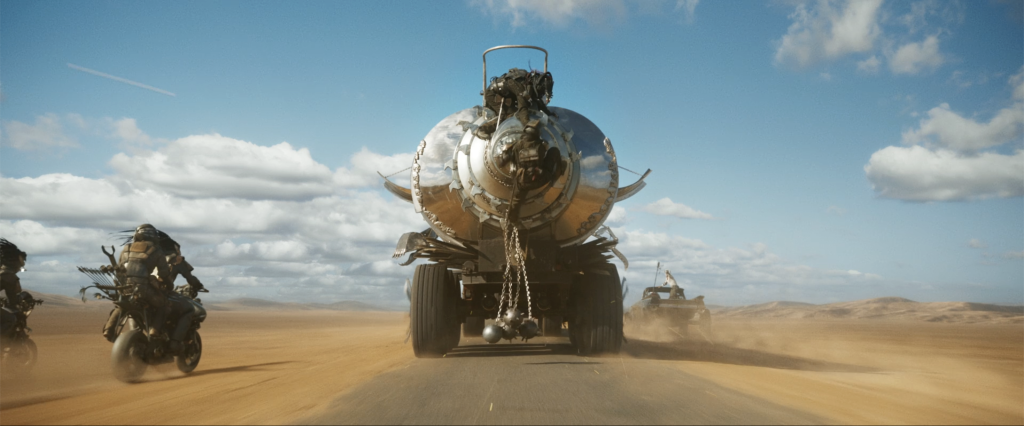
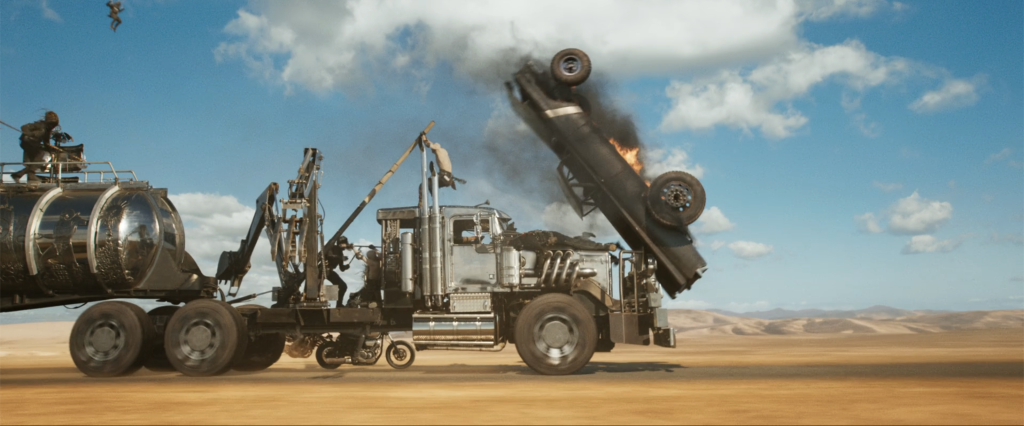
Kenworth provided two 900-series tankers for Furiosa’s War Rig, creating the basis of this formidable monster with 617 bhp at 1,800 rpm, two excavator arms, and giant wheels with tyre shredders big enough to pulverise a man. Miller and the stunt guys made yet another major change to the machine when they decided they wanted something at the back of the War Rig, thus birthing the Bommy Knocker, a kind of giant whirling mace at the rear of the truck, made out of a spinning drill with chains attached to spiked steel balls.
We get to see the Bommy Knocker in action midway through Furiosa when the War Rig is swarmed and pursued by scavengers on one of its runs. After the spectacle of Fury Road, Miller had to up the ante: He arguably outdoes that film’s “pole cats” – Gastown militants who swing from poles on moving vehicles – with road raiders who can fly. As the screenplay puts it: “the Mortifiers become the Mortiflyers.” Led by the Octoboss (Goran D. Kleut), the Mortifiers have gone rogue, defecting from Dementus’ gang. It quickly becomes clear where the name change comes from: they ski along the desert sand, and then they parachute, and then paraglide. Finally, the Octoboss himself appears on an airborne motorcycle, held aloft by a nightmarish black octo-kite with long black tentacles that stream behind him in the sky. When the Octoboss gets too close for comfort, Furiosa finally activates the Bommy Knocker, which chews him right up. It took 78 days over a ninth-month period to shoot the exhilarating chase sequence, and it required over 100 stunt performers to pull the whole thing off.
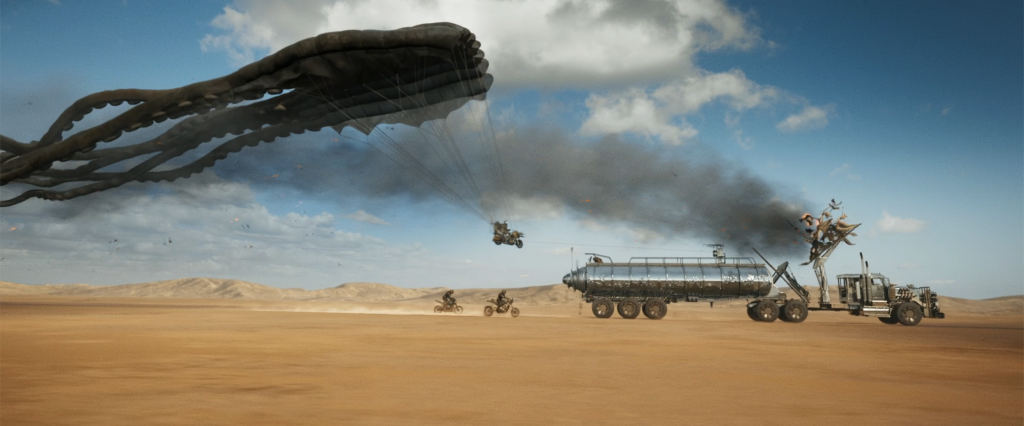
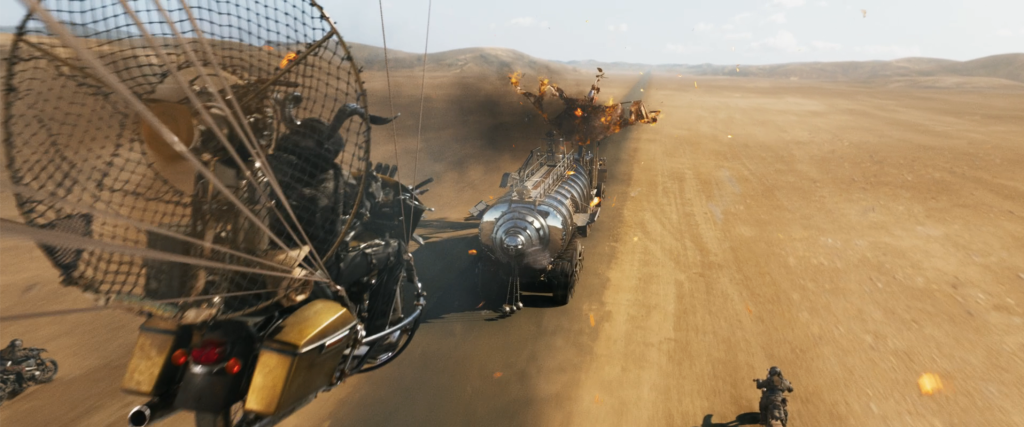
The Octoboss once fought alongside Dementus, a villain who feels more like a charismatic cult leader than a warlord like Immortan Joe. Gibson calls Dementus “basically Genghis Khan or a locust plague sweeping across the Wasteland.” The character commands a Biker Horde, an army of motorcycling marauders who prefer two wheels to four; his goons have nicknames like Mr. Harley, Mr. Davidson, and Mr. Norton (played by Elsa Pataky, Hemsworth’s wife). They punish their enemies in a medieval way: Drawn and quartered not with horses, but with motorcycles. Some of the more inspired bikes in the film include the Octoboss’ propeller bike, the mannequin bike Dementus rides at the end, and his chariot. As his horde grows and he becomes more regal and powerful, Dementus begins to style himself after a Roman emperor, assembling this chariot comprised of three motorcycles – no easy thing to master. Colin Gibson said to MotorTrend that, “[Hemsworth’s] really just steering and holding on for dear life.”

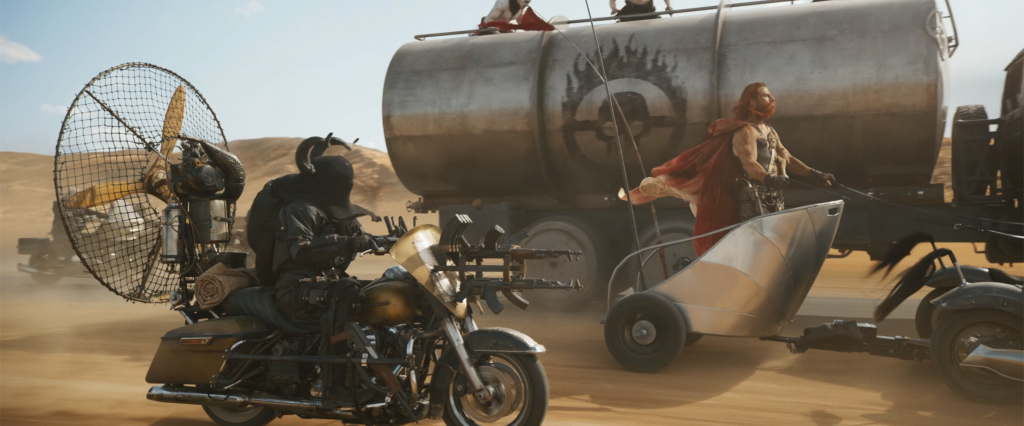
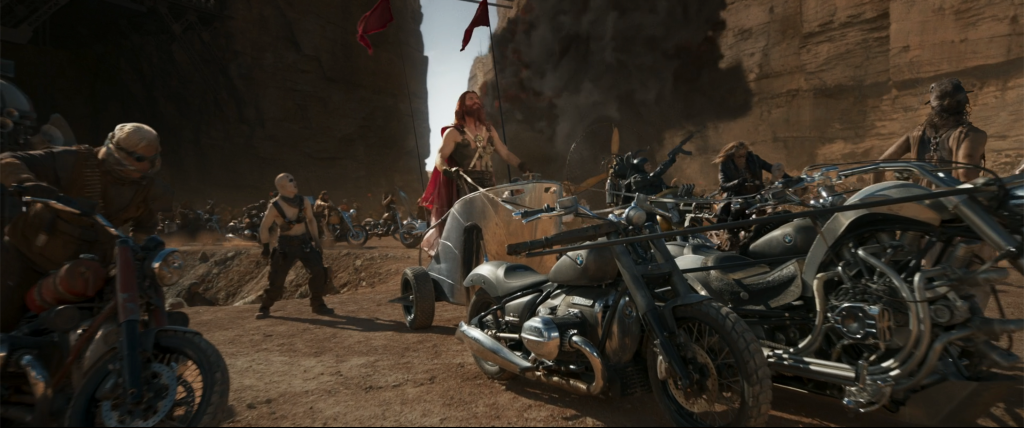
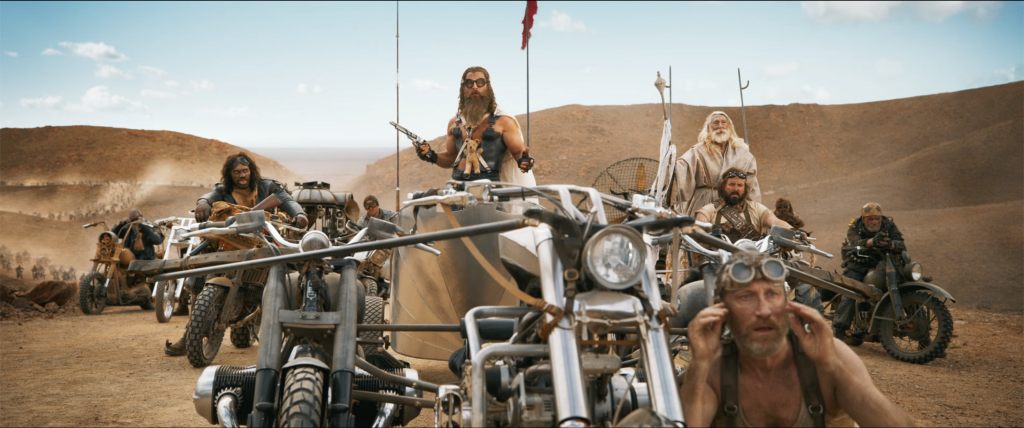
Lest you think this is a novel contraption, it’s not: George Miller once again mines Australian car culture for inspiration. Though motorcycle chariot racing never quite caught on like NASCAR, the Australians first devised the novel sport back in 1922, and it only grew in popularity after the release of silent film Ben-Hur: A Tale of the Christ in 1925. It took off in Europe and the Americas, too. A September 1922 issue of Popular Mechanics contains the first mention of such a race, describing a western motorcycle club that constructed chariots out of wine barrels cut in half and outfitted with wheels. The riders dressed up like Romans, hitched their little barrels to a single motorcycle with a rider, and were “towed at high speed around the arena.” As the sport evolved, they started to do it Dementus style, with no riders aside from the charioteer and multiple motorcycles – they started with two, but by the late ‘30s, they’d worked up to four. The sport more or less petered out after that, possibly derailed by World War II, but maybe Dementus will kick off a comeback.
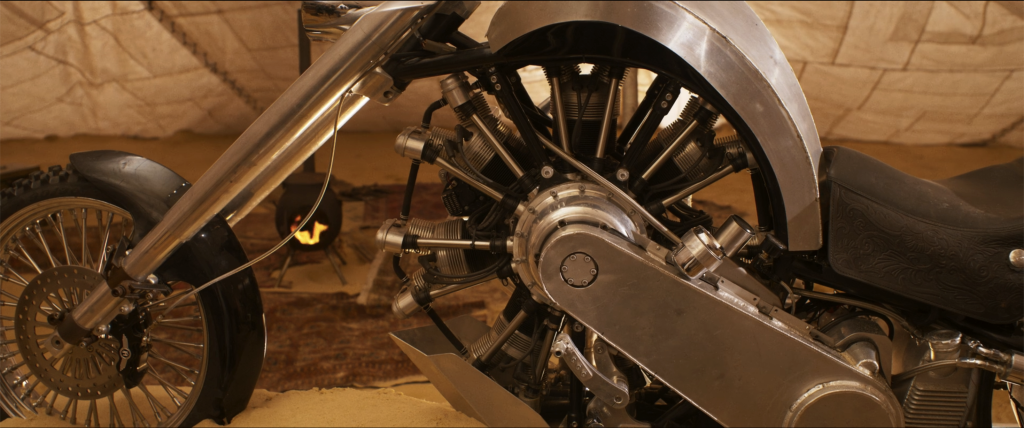
Dementus’ chariot was built around a custom bike powered by an Australian-made Rotec RT2800 seven-cylinder aircraft engine boasting 119 hp. This radial bike has a chassis crafted from chrome-moly steel and is flanked by two modified BMW R18 motorcycles replete with horsetails on their rear fenders. Though production modified it, the radial bike arrived ready-made, built years ago by John Levey, owner of JRL Cycles, who called it BlackJack. Attending airplane school in 1989 had inspired Levey to create radial bikes, a dream he’d realise years later in the early 2000s. According to vehicle supervisor Laurie Faen, the chariot can be driven with just the radial bike or with the two BMWs coupled to it.
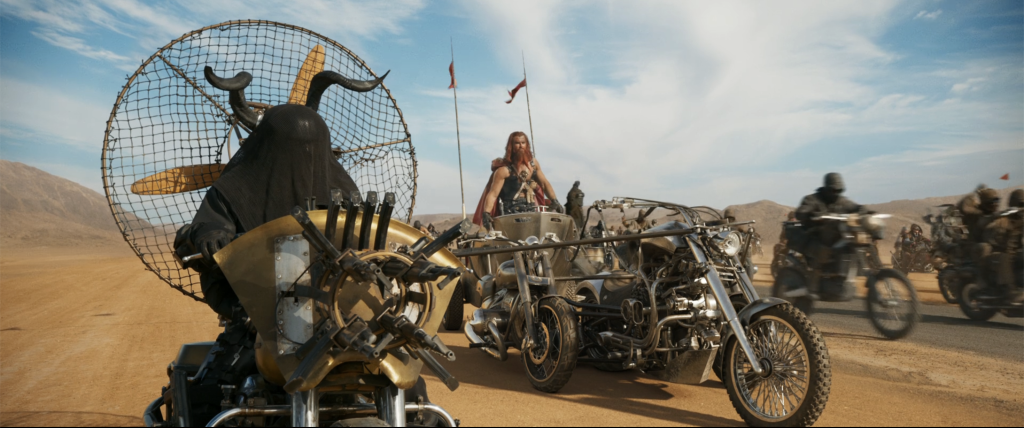
On her journey, Furiosa stows away in the War Rig and makes a desperate attempt to commandeer it, but she’s thwarted by the Praetorian Jack. He says he sees potential in her, though, what he calls “a purposeful savagery,” and he offers to teach her everything she needs to know about Road War if she’ll join his crew. Through her relationship with Jack, Furiosa finds something like hope. She rides shotgun with him in the War Rig initially, then becomes its driver. For their Bullet Farm run, though, she drives a ’62 Plymouth Valiant, a car that Jack refers to as the “V8 Pursuit.” The Valiant also happens to be the car that Anya Taylor-Joy began stunt-training in. Gibson told MotorTrend: “This was a [Chrysler] Slant-6 [engine] jacked up and super turbo’d.” It’s meant to be their getaway car to the Green Place. Ahead of their escape, Jack tasks the War Boys with loading it up with supplies and two motorbikes, one black, one white; it’s almost like a Just Married car with “his and hers” bikes.
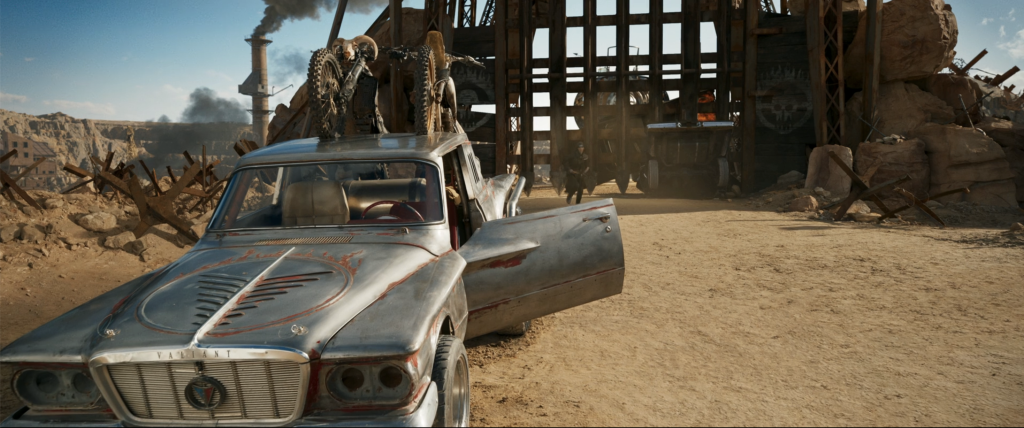
Unfortunately, the day of their Bullet Farm run also happens to be the same day Dementus takes control of it. He ambushes them when Jack’s and Furiosa’s convoy arrives, and the War Rig is lost. Dementus upgrades from two wheels to six, hopping in a Mack DM-800, a six-wheeled monster truck called the Six Foot, which was outfitted with a big-block Chevy 454 engine. This was Hemsworth’s personal favourite vehicle, what he calls a brutal machine; his character uses it to pursue Furiosa and Jack as they make a break for the Green Place. Their happiness is an affront to Dementus, a man without hope, who can see no good in the Wasteland, only tragedy and suffering. The Six Foot feels like an expression of his crushing despair and rage, a machine he’s somehow willed into being, manifested out of the Wasteland. And with the Valiant’s 145 hp @ 4000 RPM, it stands no chance against the Six Foot’s 1006 hp @ 6500 RPM.
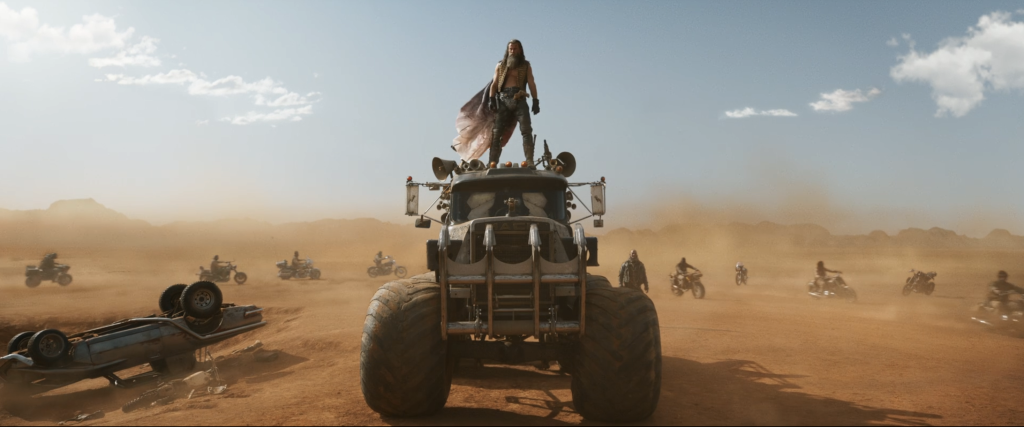
Dementus destroys any hope Furiosa has left, and she sets aside her quest for the Green Place to prioritise her single-minded vengeance. She steals a car called the Cranky Black from the Immortan’s sons Scrotus and Rictus (Josh Helman and Nathan Jones), the Beavis and Butthead of the Wasteland. Its name derives from a line spoken by Dementus to Furiosa: “We seek any sensation to wash away the cranky-black sorrow. [ . . . ] We are the already dead, Little D. You and me.” Like all other Mad Max vehicles, it’s been lovingly, thoroughly designed and adorned. Taylor-Joy said, “I love the fact there are all these details in the filmmaking that you don’t even see as an audience member. Like, the Cranky Black has human teeth all along the inside, which is so cool.” But you can actually catch a fleeting glimpse of the teeth stitched into the leather that lines the car’s interior. (Nux’s car in Fury Road also had dentures on its gearshift, a reference to the Australian saying “Fang it,” which means “step on it.”)
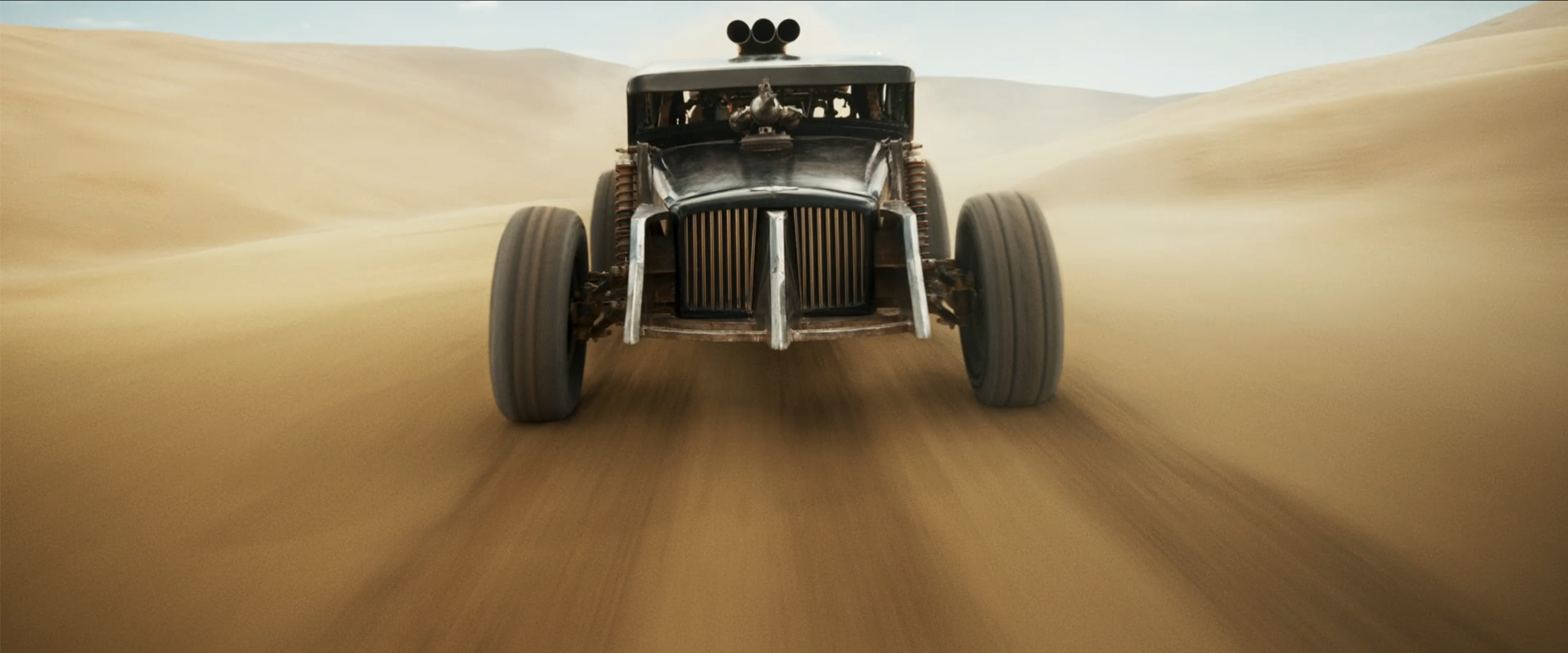
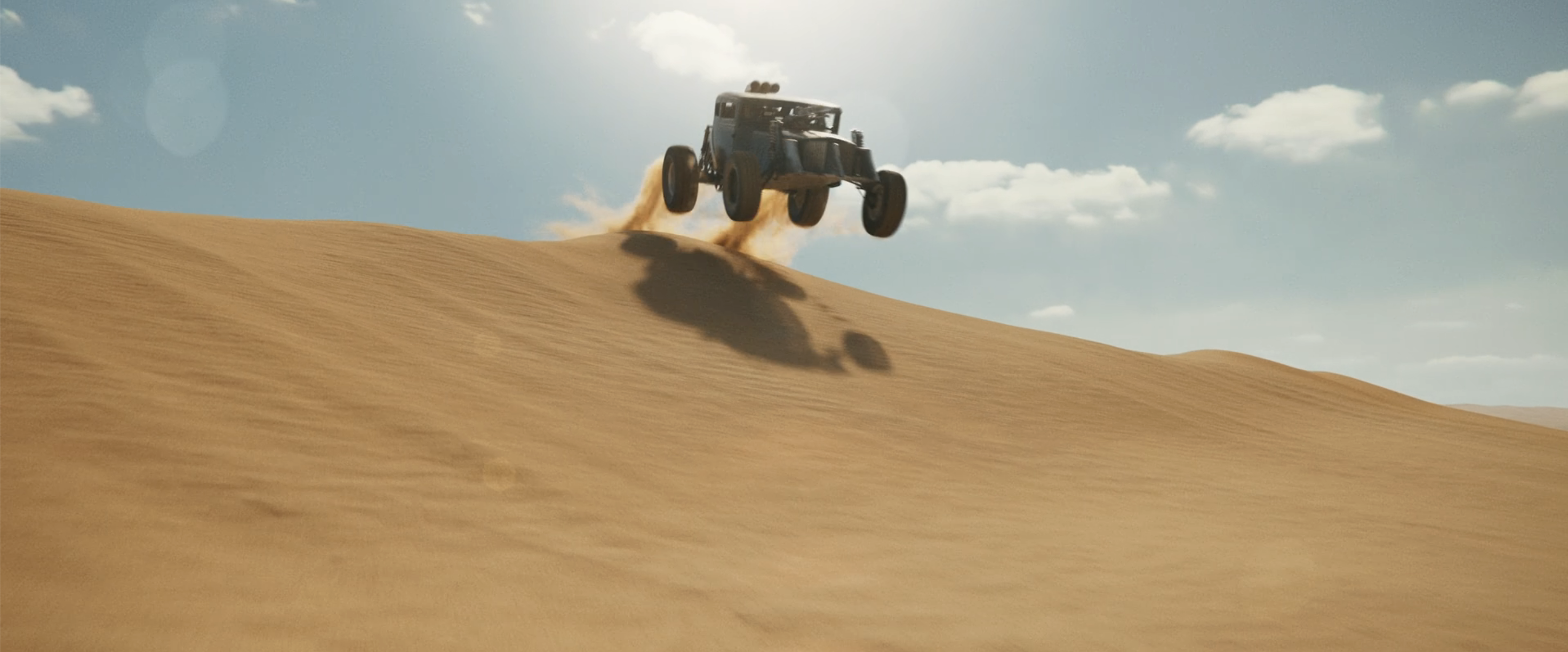
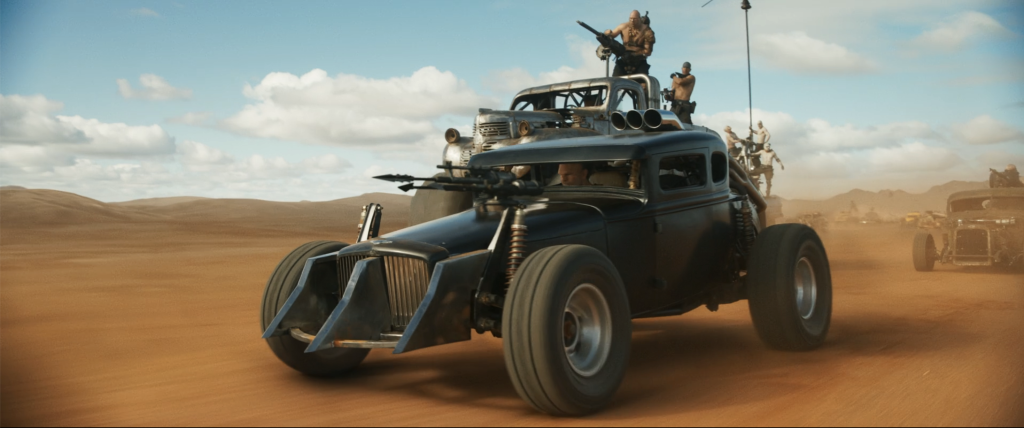
The Cranky Black is a heavily modified hot rod comprised of bits of the cab, doors, and chassis of a ’31 Ford Model A. To give it the power required to climb sand dunes, it was given a rear-mounted turbocharged V8 engine. Like a dark little beetle scuttling and hurtling along the dunes, the Cranky Black embodies Furiosa’s pitch-black pain and anger. In this vehicle, the History Man (George Shevtsov) calls her “the darkest of angels, the Fifth Rider of the Apocalypse.” She’s a pale rider hellbent on revenge, and like Death herself, Hell follows with her. The Cranky Black is such an effective weapon, it was even outfitted with a harpoon gun and a battering ram, though sadly, we don’t get to see Furiosa use them.
George Miller says the cars themselves are characters, and “they’re extensions of the characters. You see it right through the ‘Mad Max’ films. The V8 Interceptor is an extension of Max. Furiosa ultimately has that vehicle we call the Cranky Black that’s an expression of who she is at the end of the movie.” But the vehicles that populate Furiosa reveal the filmmaker, too. They’re the truest expression of Miller’s philosophy that no matter how impoverished, disenfranchised, and desolate they are, human beings are hardwired to express themselves, to make art, to create beautiful things.
